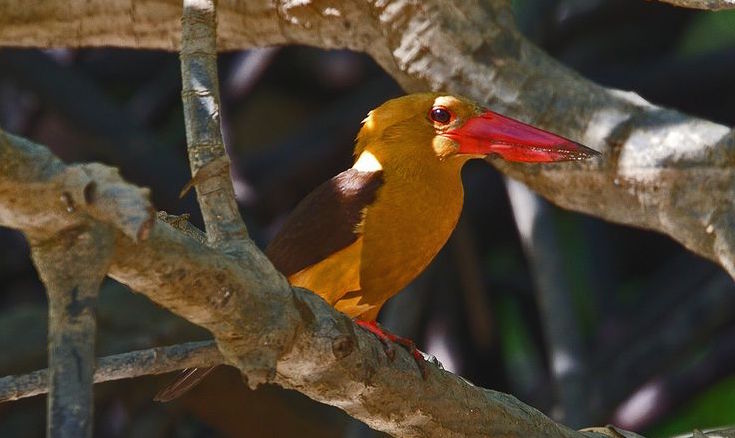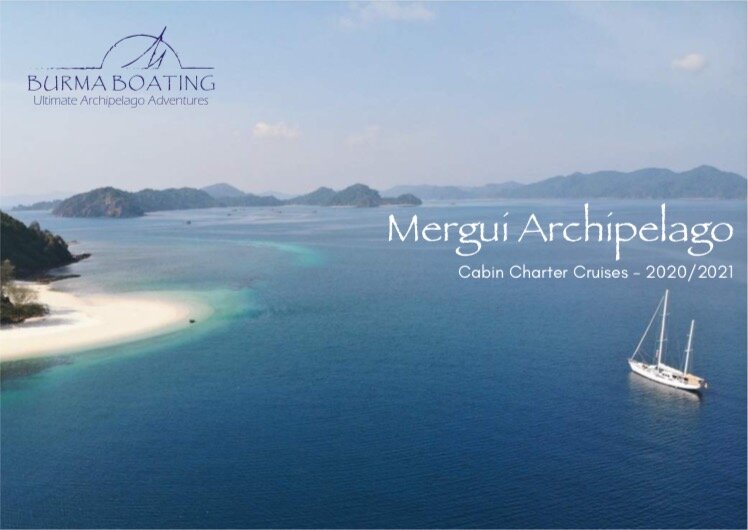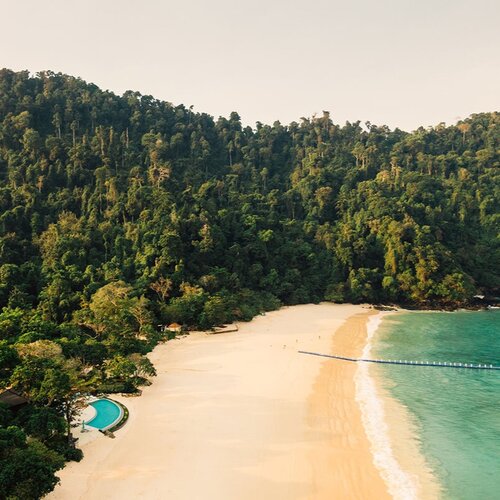10 Unique Animals in Myanmar’s Mergui Archipelago
10 Unique Animals in Myanmar’s Mergui Archipelago
September 08, 2015 in Environment, Wildlife, Mergui
Watching wildlife is one of the great joys of cruising through the Mergui Archipelago. Myanmar is the most biologically diverse country in mainland Southeast Asia and our sailing area is home to countless wonderful animals, many of which are endangered.
Below are some of the most rare and unique mammal and bird species you can discover in the region.
Top 5 Most Unique Mammals in the Mergui Archipelago
1. The Dusky Langur
This little langur is also called Spectacled Leaf Monkey because of the white rings around his eyes. He lives in the archipelago’s dense forests and in groups of up to 20 animals, with mostly one dominant male and his harem and offspring.
As Leaf Monkeys are very territorial, you can sometimes hear their loud shouting when they defend their territory from other langurs or predators. They spend the largest part of the day in the canopy, where they crawl along the branches on all fours, although they can also jump well from tree to tree. They are diurnal and most active in the early mornings and the afternoon.
Conservation status: near threatened

2. The Dugong
This peaceful creature belongs to a very small family of marine mammals, which amazingly is most closely related to elephants. Dugongs stay near the coast where they like to graze the seaweed beds of wide and shallow protected bays, mangrove channels and the leeward side of islands.
An adult usually grows to an imposing 3-4 metres and weighs around half a ton or more. By the way, the name dugong originally derives from the Malay term “duyung”, which means “lady of the sea”.
Conservation status: vulnerable

3. The Sunda Pangolin
The Sunda Pangolin, also known as the Scaly Anteater, feeds only on ants and termites which it detects with its incredible sense of smell and eats with its long, sticky tongue.
This unique animal is very rare now but if you see a big hole dug into the forest ground on one of the islands, chances are it was a pangolin: it has powerful claws with which it digs into the soil hunting for ant nests or to tear into termite mounds. Pangolins eat around 200,000 ants or termites every day!
The pangolin’s body is covered with thick scales. But as his belly is unprotected and soft, he rolls into a ball when he feels threatened.
Despite all the ground-digging, pangolins are great climbers and spend most of their days on trees or, more accurately, resting in tree holes.
Conservation status: critically endangered

4. The Oriental Small-clawed Otter
Of all otter species, this is the smallest and most unusual. Oriental Small-clawed Otters live in mangrove swamps but unlike other otters, this one spends most of his time on land. Fortunately, they can still be seen frequently in the Mergui Archipelago.
These charming animals are very playful and live in small families of one monogamous couple and their young ones, whereby the older offspring help rear the youngest. Also unlike other otters, their paws are almost not webbed, which gives them a high degree of manual dexterity, which again makes them the only otters that catch their prey with their paws instead of with their mouth.
Conservation status: vulnerable

Conservation status: vulnerable
5. The Lesser Mouse-deer
This is the only mammal that is endemic to the Mergui Archipelago: Tragulus kanchil lampensis (named after Lampi Island) is the world’s smallest hoofed animal, with a mature size and weight of only 45 cm and 2 kg. Mouse-deer lack horns but have elongated canine teeth that project out on either side of the lower jaw of males and are used in fights. Their legs are short and thin, which helps when running through the dense foliage of the island forest.
Fortunately, the Lesser Mouse-deer is still abundant on Lampi Island but together with wild boar, civet cats and large lizards it is the most hunted animal on the islands of the Mergui Archipelago.
Odd fact: some scientists believe that mouse-deer were the ancestors of whales and dolphins. The reason is that mouse-deer have been around since the Oligocene 34 million years ago (and haven’t evolved much since) and some mouse-deer species dive into the water when threatened, where they stay under the surface for up to 4 minutes.
Conservation status: least concern

Top 5 Most Unique Birds in the Mergui Archipelago
1. The Plain-pouched Hornbill
A threatened species, the plain-pouched hornbill (Rhyticeros subruficollis) luckily still thrives in Myanmar’s Mergui Archipelago. We can see them there frequently flying about in beautiful, large flocks.
It is only found in forests in and along the Tenasserim Hills snaking down the Malay Peninsula and it used to be the most common hornbill in the Mergui Archipelago.
Conservation status: vulnerable

2. Wallace’s Hawk-eagle
There are bigger and more majestic eagle species in the Mergui Archipelago: the White-bellied Sea Eagle, the Grey-headed Fish Eagle or the Crested Serpent-eagle. But this one is our favourite. Wallace’s Hawk-eagle is one of the smallest eagles in the world. At about 46 cm long it is just the size of a falcon. But it is a rare feat to see this elegant and beautiful bird.
Conservation status: vulnerable
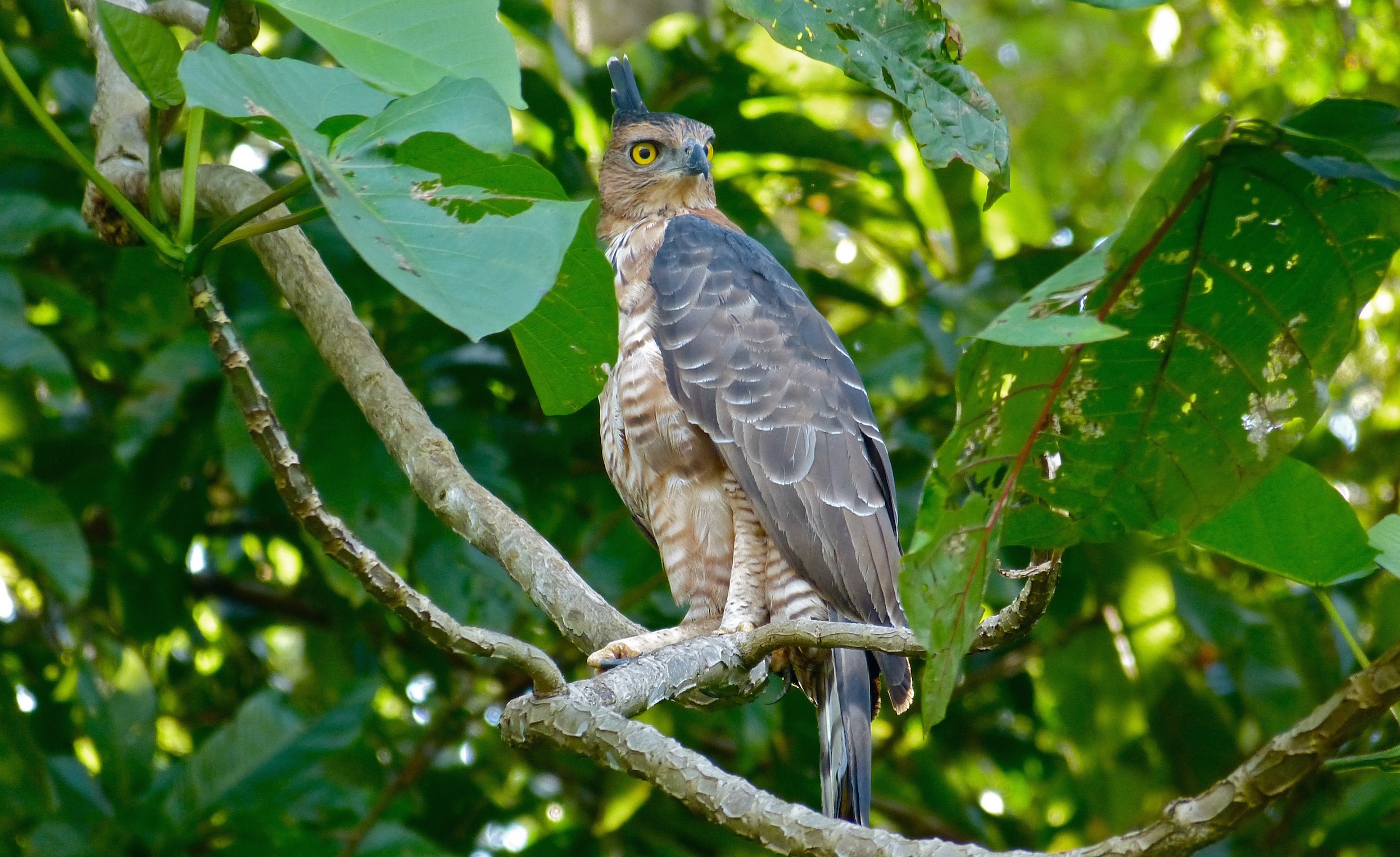
3. The Crested Partridge
We love the Crested Partridge (Rollulus rouloul) for its stunning plumage. This fellow here is a male but the female has equally beautiful, olive-green plumage, with chestnut-brown scapulars and wings. Her head is slate-grey.
Their nest is scraped ground and hidden under a pile of leaf litter. The crested partridge is usually seen singly or in pairs as it uses its feet to probe the forest floor for fruit, seeds and invertebrates. When disturbed, it prefers to run but if necessary it can fly short distances on its rounded wings.
Conservation status: near threatened
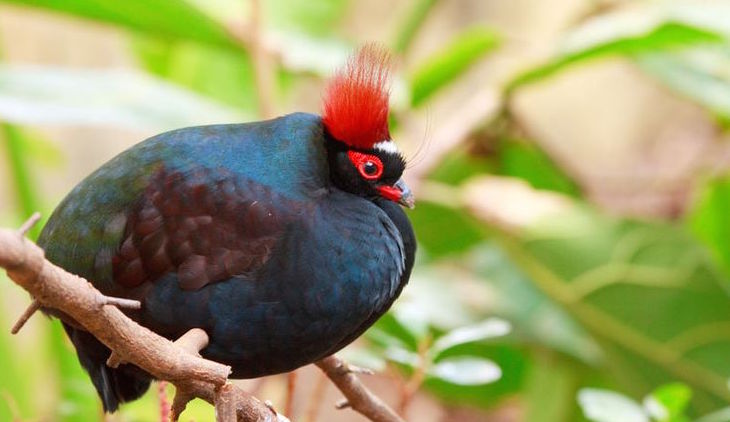
4. The Red-throated Sunbird
Sunbirds are the hummingbirds of the Old World: brightly-coloured flying gems living on nectar and pollen. There are 132 sunbird species in total but the Red-throated Sunbird is probably the rarest of them all. We are very happy that the Mergui Archipelago is still home to these special birds.
If your are very lucky you may see one foraging in the canopy. The nest is made of matted plant fibres and is suspended 9-20 m above the ground on a cord from a tree at the edge of a clearing. Only one egg is laid each year. Other than that one knows next to nothing about this beautiful bird.
Conservation status: near threatened
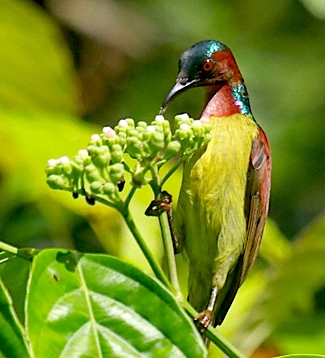
5. The Brown-winged Kingfisher
Prey are partly fish and mainly crabs, which he hunts from mangrove branches or roots by flying down low to land on the mud and rapidly seize the prey. He can be found all around the Bay of Bengal but is now considered near threatened.
Conservation status: near threatened
For the most recent survey on animals and the ecological diversity of the Mergui Archipelago, have a look at this study by Istituto Oikos.
Have a look at our Pinterest page to discover Myanmar’s wildlife with us.
